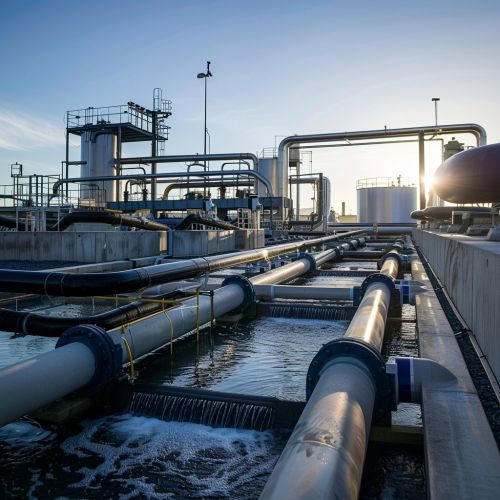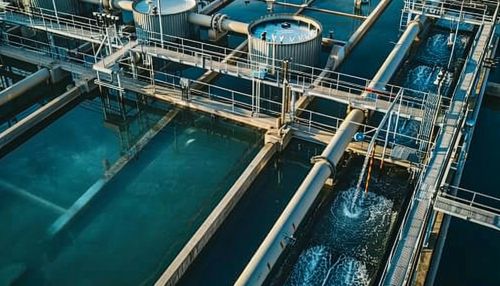Water Supply System
Introduction
A Water Supply System is a complex network of engineered hydrologic and hydraulic components which provide water supply. It includes a drainage basin, a water purification facility, a system of pipes, and a distribution network that delivers potable water to consumers.
Components of a Water Supply System
A typical water supply system consists of several key components, each playing a crucial role in ensuring the delivery of clean, safe water to consumers.
Drainage Basin
The Drainage Basin is the geographical area from which water flows into a river, lake, or reservoir. It plays a vital role in the water supply system as it collects and stores water from precipitation.
Water Purification Facility
The Water Purification Facility is where the raw water collected from the drainage basin is treated to remove impurities and make it safe for consumption. This process involves several stages, including coagulation, sedimentation, filtration, and disinfection.
Pipes
Pipes are used to transport water from the purification facility to the consumers. They are typically made of materials like PVC, cast iron, or copper, depending on the requirements of the system.
Distribution Network
The Distribution Network is the system of pipes, pumps, and storage tanks that delivers the treated water to consumers. It is designed to ensure a continuous supply of water, even during periods of high demand.


Water Purification Process
The water purification process is a series of steps designed to remove impurities and make the water safe for consumption. It involves several stages, each designed to remove specific types of contaminants.
Coagulation
Coagulation is the process of adding chemicals to the water to make the tiny particles of dirt and other contaminants stick together. This forms larger particles, known as flocs, which are easier to remove.
Sedimentation
During Sedimentation, the water is allowed to sit undisturbed while the flocs settle to the bottom of the tank due to gravity. The clear water on top is then moved to the next stage of the process.
Filtration
In the Filtration stage, the water is passed through layers of sand, gravel, and charcoal to remove the remaining particles. This process also helps to remove certain chemicals and microorganisms.
Disinfection
Disinfection is the final stage of the water purification process. It involves the addition of chemicals, such as chlorine, to kill any remaining bacteria or viruses in the water.
Maintenance and Management of a Water Supply System
Proper maintenance and management of a water supply system are crucial to ensure its efficient operation and longevity. This involves regular inspection and repair of the system components, as well as monitoring the quality of the water.
Inspection and Repair
Regular Inspection and Repair of the system components is necessary to prevent breakdowns and ensure the system is operating efficiently. This includes checking for leaks in the pipes, inspecting the condition of the pumps and storage tanks, and ensuring the water purification facility is functioning properly.
Water Quality Monitoring
Water Quality Monitoring involves regularly testing the water for the presence of harmful contaminants. This is important to ensure the water is safe for consumption and meets the required standards.
Conclusion
A water supply system is a complex network of components that work together to provide clean, safe water to consumers. From the drainage basin where water is collected, to the purification facility where it is treated, and the distribution network that delivers it to consumers, each component plays a crucial role in the system. Proper maintenance and management, including regular inspection and repair of the system components and monitoring the quality of the water, are essential to ensure the system's efficient operation and longevity.
